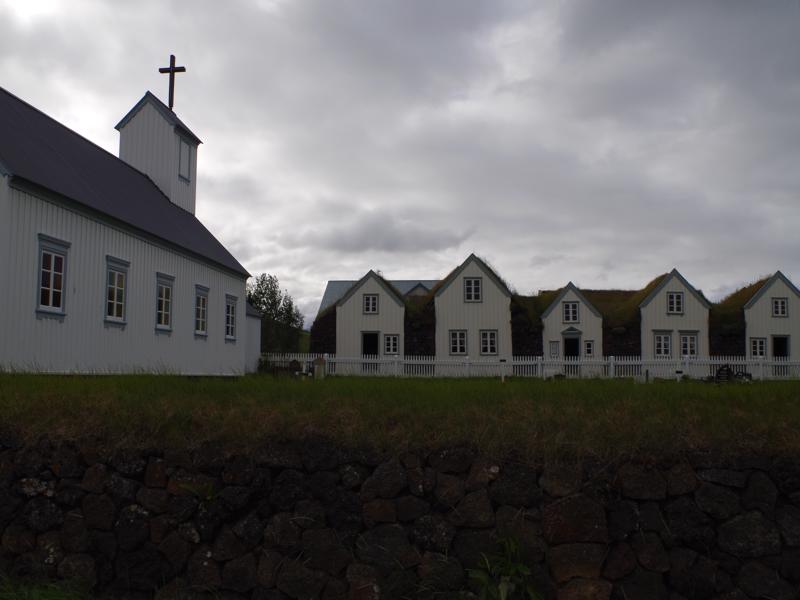Grenjadarstadur Turf Farm Museum (Grenjaðarstaður)
Grenjadarstadur Turf Farm Museum (Grenjaðarstaður)
When Icelanders switched to using concrete as a building material in the early 20th century, little thought was given to preserving the traditional style of turf buildings that had been in use since the 9th century.
As a result, most farm buildings of turf and stone soon disintegrated, once they were no longer maintained.
After independence in 1944, few of these traditional farm buildings were still inhabited, and a few far-sighted individuals realized that a large part of Iceland's heritage was about to disappear forever.
At that point, the National Museum of Iceland undertook to renovate and preserve those farms that were still largely intact.
The old parsonage at Grenjadarstadur is one of the finest of them and thought this was a wealthy farm; it portrays vividly the simple subsistence life of most Icelanders in past times.
Grenjadarstadur traced its history back to Iceland's settlement in the 9th century and was one of the area's wealthiest farms.
The current turf house and parsonage was one of Iceland's largest with a floor area of about 775m2.
The oldest part was built in 1865, but extensive renovations took place in 1877. At that time around 30 people lived at Grenjadarstadur, including laborers and domestic staff, as well as the minister's family.
Every turf building in Iceland is slightly different and dictated by both weather conditions and the type of building material available. In drier areas, the roof pitch was less steep so the turf would not dry out and crack. In areas of higher rainfall, the pitch would be steeper to avoid the turf getting waterlogged and leaking. At Grenjadarstadur, the outer walls are made of lava, which is readily available from the lava flows nearby. Where lava was scarce, the walls were built of turf.
As you wander through the rooms, note how dry the interior walls are and how well insulated the buildings are, in fact, there is very little temperature difference between summer and winter. The houses were not heated as firewood was scarce and only used for cooking.
The house was inhabited until 1949 after which the National Museum of Iceland took charge of preserving it. It was opened as a local heritage museum in 1958, and over one thousand historical artifacts are now on display.
In the graveyard, there is a rune-stone from the middle ages.
https://www.northiceland.is/en/what-to-see-do/service/grenjadarstadur-the-old-farmhouse
Tel. (+354) 464 3688 / 464 1860


